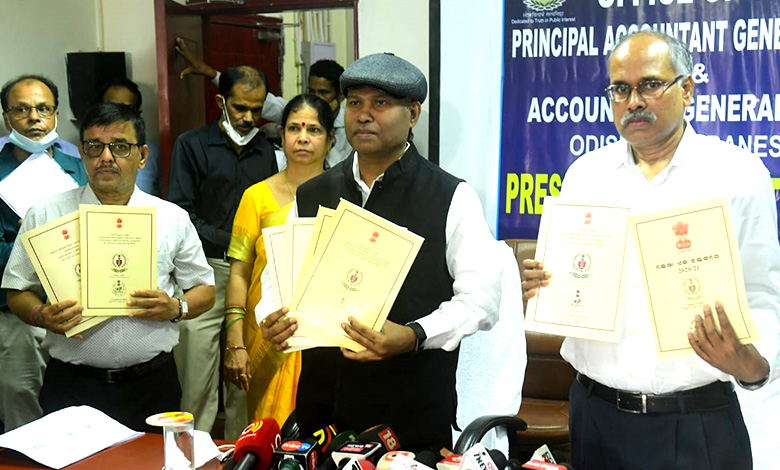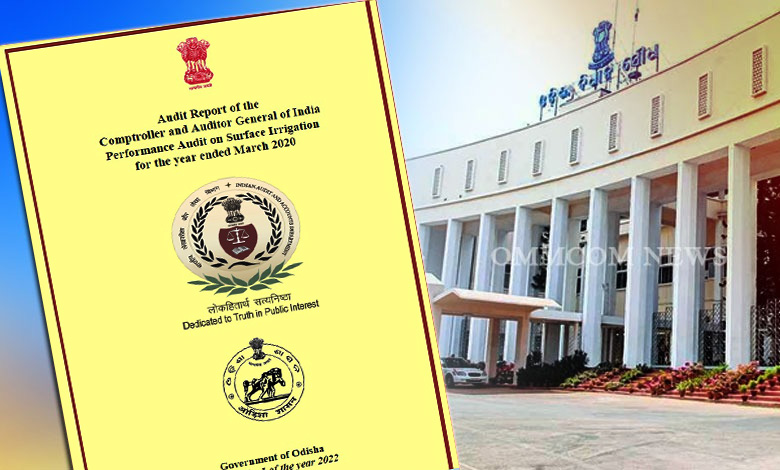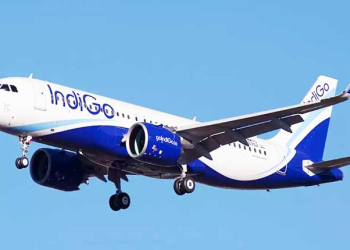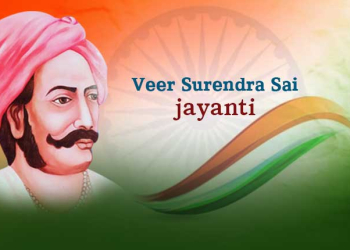Bhubaneswar: The Comptroller and Auditor General’s audit report which was tabled in the Assembly on Thrusday reflected several deficiencis in Surface Irrigation projects. According to the CAG report, there were issues in the planning, implementation and monitoring of the projects. The financial management of the test-checked projects was marred due to surrendering of funds resulting non-completion of projects despite availability, the report stated.
“There were also instances of loss of central assistance, parking of funds without utilization, non-realisation of government revenue, non-adjustment of advances and inadmissible payment of tax. Projects were found deficient in preparation and execution of DPRs and incorrect calculation of BCR of the projects. These led to modifications in design and scope of work and revision in cost estimates affecting the schedule of implementation of the projects,” the CAG audit report stated.

Utilisation of irrigation plays a significant role in economic growth and poverty reduction of the farmers of any state. Odisha has a cultivable land of around 61.80 lakh hectare and 49.90 lakh hectare can be brought under irrigation coverage through major, medium and minor irrigation projects, the CAG report tabled by Finance Department Minister Niranjan Pujari stated.
The average annual availability of surface water for irrigation is estimated to be 95.54 billion cubic meters in Odisha. In order to manage the water resources of the state, 7 Major, 40 Medium and 2,340 Minor irrigation projects are operational. Budget provision for the surface irrigation during the period 2014-15 to 2019-20 was Rs 30,366.51 crore, out of which Rs 25,153.35 crore was utilised.
This report contains results of a Performance Audit of the Surface Irrigation in Odisha which was conducted with the objectives to assess the adequacy of financial management of projects; planning and execution of the project deliverables; and whether coordination with all stakeholders was ensured and monitored for sustainable extension of benefits to the targeted population during the period 2014-19.
The Performance Audit covered 24 Major/Minor irrigation and Mega Lift Projects which were completed/partly completed during January 2011 and March 2017.
This Report of the Comptroller and Auditor General of India has been prepared for submission to the Governer of Odisha under Article 151 of the Constitution of India and under CAG’s DPC Act 1971. Audit has been conducted in conformity with the Auditing Standards issued by the Comptroller and Auditor General of India.
The CAG Report Concludes:
Odisha Government had initiated various irrigation projects (Major, Minor, Mega Lift etc.) at considerable cost with the objective of providing adequate and assured water supply for farming. However, as noticed in audit, lack of adequate and assured supply of water through completion of irrigation projects has deprived the farmers of irrigation facilities, the report stated.
During the period covered by this Performance Audit i.e. 2014-19, audit test checked five major Irrigation projects, nine MLPs and 10 MIPs for which a sum of ₹12,742.11 crore had been incurred up to March 2020. Other than nine MLPs, increase in cost of the projects ranged between 182 and 4,596 per cent. Despite escalation, only one major project i.e. UIIP had been completed and other four major projects were in different stages of execution.
Similarly, in spite of incurring expenditure of `12,742.11 crore in all of the test-checked projects, the IP achieved was 1,22,418 ha against IP proposed of 5,02,842 ha which constituted only 24 per cent of the envisaged potential. The reasons for non-completion and non-achievement of IP in test checked projects are non-acquisition of land, deficient DPRs, defective survey and investigation, deficient design in execution of the projects, inadequate availability of water in the canals etc. Implementation of major projects are facing delays ranging from 13 to 43 years.
“The delays and cost overrun were due to factors such as delayed land acquisition, delayed R&R measures and deficiencies in works management etc. As only paddy is cultivated without adoption of a multi-cropping pattern by the farmers in the project ayacuts, all the projects run the risk of economic unviability. There were also deficiencies in participatory management as well as handholding the stakeholders and laxity in monitoring of project implementation.”
Though the extension of irrigation facility is of critical importance for the growth of the agricultural and farming sector and despite release of substantial funds for completion of the projects, the projected irrigation potential (IP) could not be created to the benefit of farmers.
Recommendations by the CAG
1. Department needs to closely monitor financial management of the irrigation projects and fix responsibility on the executives for financial irregularities.
2. The State Government may evaluate performance of the components of individual projects to identify specific areas for focussed attention and direct all executants to intensify efforts for their expeditious completion.
3. Government may ensure commencement of project works after acquisition of land as stipulated in OPWD code.
4. Government may adopt suitable mechanism for timely evacuation of the displaced persons immediately after payment of R&R assistance and fix accountability on officers responsible for delay in evacuation resulting in extra payments.
5. Responsibility needs to be fixed on executives for improper survey and adoption of defective design causing slippage of embankment necessitating avoidable restoration works.
6. Accountability on executives needs to be fixed by the Department for defective execution of works.
7. Government needs to take initiatives by interacting with farmers for adopting a multi-cropping pattern as envisaged in project proposals.
8. Responsibility needs to be fixed on the authorities for non-levy/non-recovery of legitimate water charges from industries drawing water from irrigation projects.




















